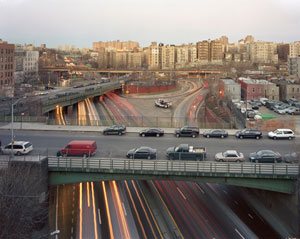Understanding the Social Determinants of Health: Breaking the Link between Poverty and Health
Brown graduates working with Project Health (program where college students work in local health clinics) based in Providence, Rhode Island. Samantha Murder (Program Manager) and Hanna Nichols (National Talent and Technology Coordinator)
Cycle of Poverty
- MONEY is needed for healthy food, healthy housing, childcare (so you can go to work), education and school, clothing (job interviews), health care, utilities, medicine
- in order to get money you need a JOB
- in order to have a job, you need EDUCATION
Need education and a good job for money, but need money for education and chance for a job! Not a linear path and a difficult cycle to enter.
Project Health works to provide resources and knowledge.
Social Determinants of Health- “economic and social conditions under which people live which determine their health”
- The Big Five: Food, housing, energy, education, and employment/insufficient income.
- Shaped by the distribution of money, power, and resources (influenced by policy choices)
- Social determinants are mostly responsible for health inequities
What do we mean by Poor?
Mentioned that the federal poverty line has been used a lot throughout the symposium as a measure of poverty. They stressed that people are struggling for money well above the federal poverty line. The federal poverty line for a family of 4 is $22,050, but, in suburban Illinois for instance, a family needs at least $58,000 for necessities (study done by NCCP -see budget calculator)
FOOD
Food insecurity greatly increases likelihood for poor health (ex. low birth weight for mothers)
Compared nationally, Vermont is doing well, subsidized lunches and breakfasts at school are critical (50% of kids in Essex county use this) Essex also has high levels of low birth weight.
What’s out there? Resources to combat food insecurity
ENERGY
Heat or eat?
Energy insecure households- 22% increased chance of being hospitalized since birth
What’s out there?
- LIHEAP (covers a large amount of monthly winter heating bill, if you can’t meet cutoff your utilities will be shut off- difficult to pay back. Grants are getting smaller)
- local neighborhood funds
- Special protections for disabilities
- Payment plans (utilites prefer some money)
HOUSING
Related to health. Household mold (makes you 2.2 times more likely to experience asthma!), cockroaches, cold, lead poisoning, unsafe housing conditions, stress from not being able to pay rent contribute to asthma and low nutrition, hospitalizations, poor health
Housing is considered not affordable when it costs more than 30% of income.
Housing in context- Vermont. Top 10 occupations in Vermont include retail salespeople, cashiers, janitors and cleaners- none of whom have a salary high enough to pay for housing. Not a livable salary! Poverty is “not just about getting a job”
What’s out there
- public subsidized housing (projects)
- private subsidized housing (contracted out)
- housing choice voucher Program (Section 8)- pay up to 30% of income and government pays rest- HARD TO GET, 5 to 8 year wait for voucher in Rhode Island
- shelters
- transitional housing
- rental assistance
- legal action- something unsafe in house- legal pressure on landlord (less expensive than moving)
EDUCATION
They highly suggested the film “Waiting for Superman”! (check out the trailer)
What’s out there
- GED classes
- ESOL classes (English is 2nd language)
- Adult basic education
- Computer literacy
- Child enrichment
- Head start and early head start (includes literacy classes for parents, checkup for kids, losing seats right now)
INSUFFICIENT INCOME/ EMPLOYMENT
Related to obesity and other health issues. Not knowing what will happen raises stress and sickness- lack of locus of control.
People below the poverty line live an average of 9.6 health adjusted years less than Americans above the poverty line!
What’s out there
- Child care subsidies
- Food stamps
PROJECT HEALTH
Founder noticed underlying health problems involved with evictions
Doctors could do nothing for patients suffering from unemployment, poor housing.
Student in project health connect families to resources/volunteers. For example, they often connect families to food pantries or call utilities to arrange payment plans.
HOW THEY WORK
- guided referrals
- resource knowledge
- identification of barriers
- creative solutions
- education
- advocacy
- connections
Conversations about food security and housing are important to both doctors and patients, but those conversations weren’t happening. Health services often don’t have the time or the knowledge to refer people, which is where Project Health steps in. Project Health also works to collect data that can be used in advocacy movements and campaigns.
Located in 6 cities, with 600 volunteers, and has helped over 5,000 families.
If you’re interested, check them out here!
